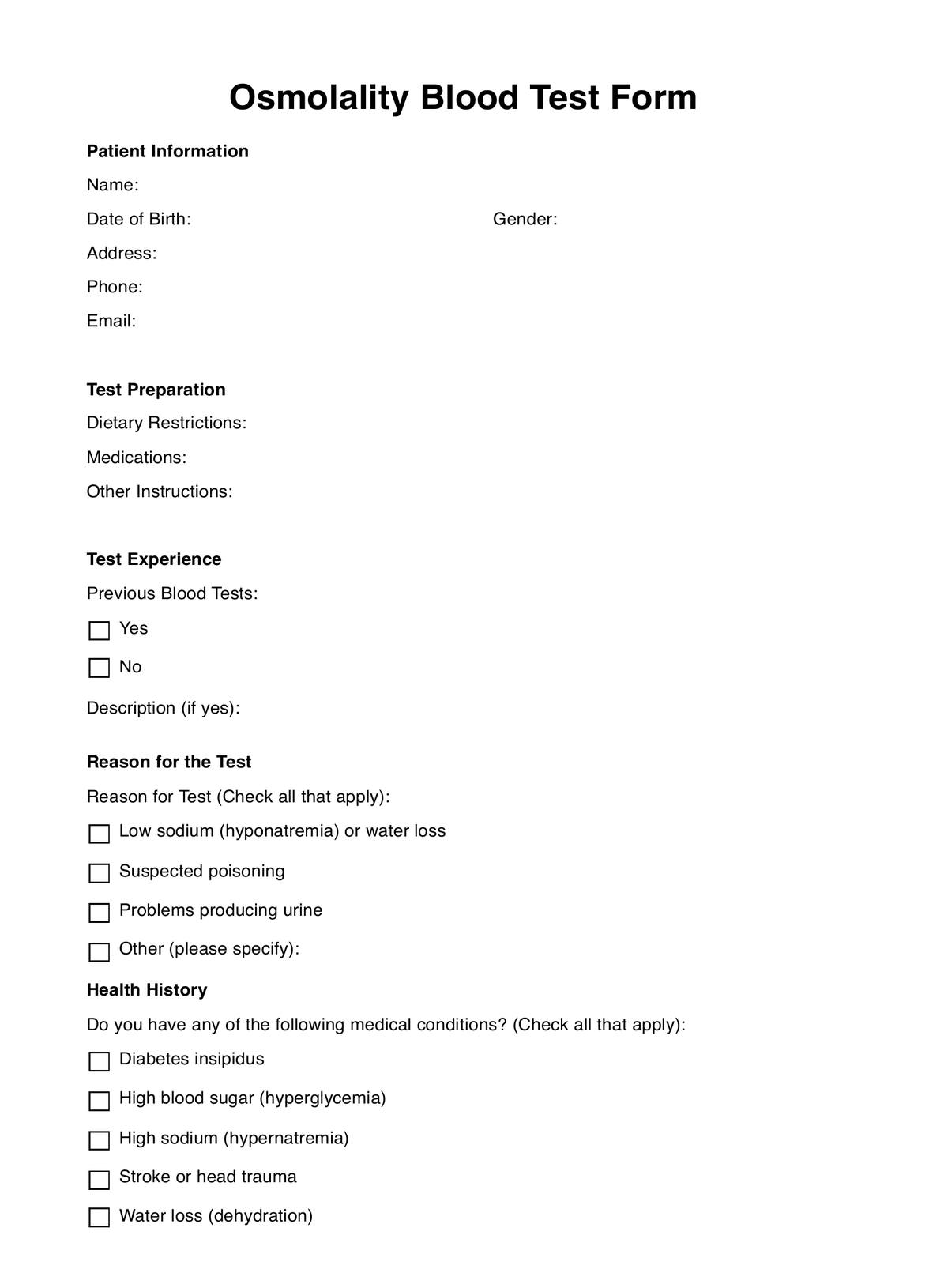These tests are typically requested by healthcare providers, including doctors, nephrologists, endocrinologists, and emergency room physicians.

Osmolality Blood
Get the Osmolality Blood Test form –simplify patient data collection. Free PDF download is available to ensure efficient diagnostics.
Use Template
Osmolality Blood Template
Commonly asked questions
These are used when there are concerns about a patient's fluid and electrolyte balance, such as suspected electrolyte imbalances, dehydration, poisoning, or certain medical conditions.
It involves drawing a blood sample, which is then analyzed in a laboratory to measure the concentration of solutes in the blood.
EHR and practice management software
Get started for free
*No credit card required
Free
$0/usd
Unlimited clients
Telehealth
1GB of storage
Client portal text
Automated billing and online payments











